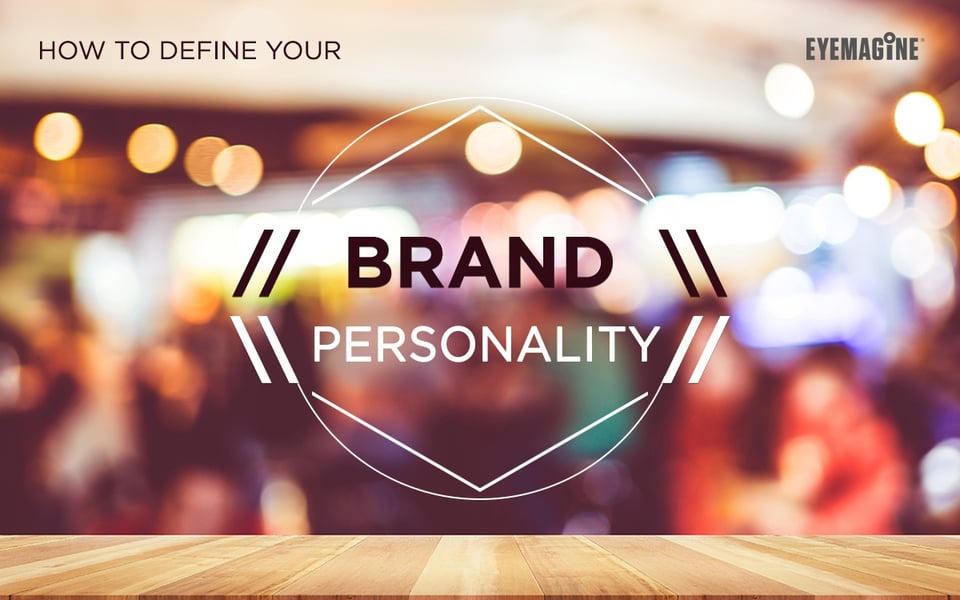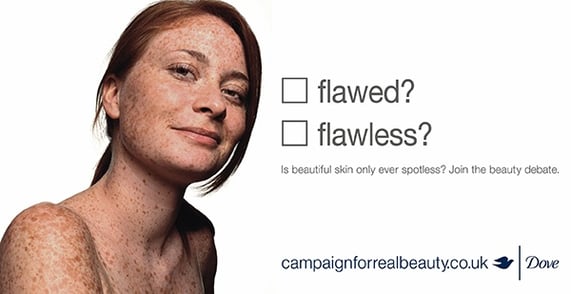
Your brand.
It’s your baby.
It’s near and dear to your heart.
It’s how you want the world to know and perceive you.
It’s weighty.
For a startup business, developing your brand can be stressful. It can seem like a lot of pressure.
And it should.
This is how your buyers, or potential buyers, will judge whether or not you’re worth their time.
It’s your “first impression,” and it’s 100 percent the buyers’ choice whether to love it or leave it.
If your branding is not up to par, or doesn’t meet their expectations, you can kiss them and their business goodbye.
I’m going to help take some of this weight off your shoulders.
In this blog post, I’ll describe a simple, two step process for defining your brand personality - a large and crucial part of your company’s overall image.
Whether you own a startup or a well established company, keep reading to discover how to define your brand personality in a way that will both attract your desired customers, and keep them loyal for life.
How to Define Your Brand Personality
Wait, What is a Brand Personality?
Your brand personality is your business, in human form.
If your business were to take on human characteristics, what would it look like? How would it behave?
Here are some examples to get your wheels turning. Your brand personality could be:
|
|
Having a consistent set of characteristics like these will make your brand more memorable and more valuable to customers.
But you can’t just come up with these traits on your own. Next, we’ll share the two necessary steps to defining your brand personality.
Step 1. Tango
How can you expect to get your desired customers to fall in love with your business if you don’t even know who they are?
Branding is a two-way relationship.
It takes two to tango.
Before you make any moves, you need to take the time to get to know your buyers.
The truth is, you can’t expect your customers to fall in love with whatever you put out there.
You have to know what they want: their needs, their expectations, their aspirations.
Then you have to meet those needs, expectations, and aspirations.
So, how do you get into the mind of your buyers?
Conduct Buyer Insight interviews à la Adele Revella, for starters.
Buyer Insight interviews are critical tools for discovering all you need to know about your customers.
These interviews will help you learn about their motivations behind buying, the factors they evaluate when comparing alternatives to your product/service, and what might prevent them from buying.
Wouldn’t you like to have this treasure-trove of information about your target audience?
Getting this information is an excellent starting point to developing a relevant brand personality (and your entire marketing strategy in general).
SEE MORE: How to Create an Effective Marketing Strategy with Buyer Personas
Step 2. Mirroring
After you’ve collected as much information as you can about your buyers, you’ll be able to relate to them and resonate with them much more easily.
You can design your brand around them, as it should be, to better attract them to your business.
Remember: It’s all about mirroring your buyer personas.
Your brand personality is not your personality, or your employees’.
After completing Buyer Insight research, you might find that it’s not even what you had in mind when you started your business.
According to Investopedia, “Customers are more likely to purchase a brand if its personality is similar to their own.”
So, if your typical buyer persona is friendly and social, make your brand personality bubbly and welcoming to reflect that.
If your average customer is flirty and cute, design your brand personality to be alluring and charming.
Take a look at how each of these well known brands make themselves relatable and enjoyable to their customers.
Just a Few Brand Personality Examples...
Nike

In this ad, Nike proudly displays its brand personality.
From this image we can tell that Nike’s personality is strong, energetic, and athletic - and we can assume the same of their typical buyers.
The copy also appeals to Nike buyers’ competitive nature and desire to finish in first.
Dove

Dove’s brand personality is transparent, confident, and inspiring.
These traits come out strongly in this ad that challenges society’s definition of beauty.
Chanel

Chanel showcases its brand personality in this simple but stunning advertisement.
It’s obvious that the Chanel brand is sophisticated, elegant, and daring.
SEE ALSO: 4 Top Branding Guidelines to Improve Your Marketing Strategy
Developing a relevant and enjoyable brand personality like these will shape how people feel about the product or service you have to offer.
It will guide your marketing efforts and be a key tool for your designers, copywriters, and developers.
Need help creating or improving your brand personality?
Let the team of experts at EYEMAGINE make your job easier. Contact us today for a consultation.

